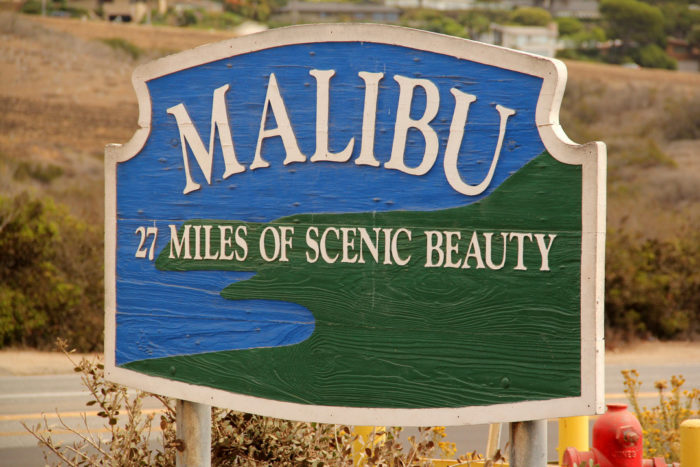
Image Credit: Ana Paula Hirama / CC BY-SA 2.0 / Flickr
Concerns over health risks posed by window caulk tainted with PCBs are prompting some parents in Malibu, California, to take their children out of school despite the insistence by school authorities the classrooms are safe.
The New York Times reports that polychlorinated biphenyls, compounds once widely used but now banned, were discovered in caulk used on the windows of Malibu High School three years ago. The Santa Monica-Malibu Unified School District and the Environmental Protection Agency both say that an ongoing testing and dusting campaign controls the problem and that students are not at risk.
But in this beachside community — known as the town where the TV series Baywatch was filmed — a few high-profile parents, including supermodel Cindy Crawford, disagree. Students have been pulled from school, and The Times reports that school board meetings have turned into chaotic shouting matches with parents calling school officials liars.
“The school district is telling us our kids are safe, but that’s what they were telling parents in Flint, Michigan,” Jennifer deNicola, a mother of an eighth grader and a tenth grader who has spearheaded the push to remove PCBs was quoted as saying. “We know there’s a problem, and they refuse to acknowledge it.”
A group of parents and teachers has sued the school district to force the removal of all caulk that contains PCBs. The chemical is blamed for a variety of health ills, including thyroid cancer, migraine headaches, and even colds.
The district tries to reassure parents
School board president Laurie Lieberman said that the board has “tremendous empathy” for people who are frightened about possible health dangers, but adds that officials are confident that the high school and other school buildings on the campus are safe.
EPA administrator Jim Jones told the newspaper that all of the window caulk would be removed in the next several years as the buildings are renovated, but for now regular cleaning and ventilation are a cheaper approach.
Only one of the seven school board members actually represents Malibu. The rest live in Santa Monica, and they’ve had the votes so far to reject proposals to replace the caulk immediately.
But parents are turning up the heat, and they recently got some support from Dr. David Carpenter, a public health physician and director of the School of Public Health at the University of Albany in New York. Carpenter is an expert witness in the lawsuit pitting a group called America Unites against the Santa Monica-Malibu Unified School District, and he told a forum last month that school officials should be acting now, not later.
“You don’t wait until you can count the bodies before you take steps when you have every reason to believe a certain exposure is causing disease,” he said, according to an article in The Malibu Times.
PCB-tainted building materials appear to be a widespread problem in schools. In Connecticut, for example, a report last fall suggested that two-thirds of all schools in the state could be contaminated with PCBs. In New York City, the United Federation of Teachers says that hundreds of schools have fluorescent light fixtures with ballasts that contain PCBs.
Dr. Daniel Lefkowitz, who created a website called PCBinSchools.org after discovering PCBs in window caulking at this son’s elementary school in New York, said that thousands of students are exposed to PCBs in school buildings constructed between the 1930s and the late 1970s. He’s compiled a long list of news articles on the topic and posted links at his website.
Lefkowitz won an Environmental Quality Award from the EPA for his work.
Weekly Newsletter
Get building science and energy efficiency advice, plus special offers, in your inbox.











One Comment
Not sure how I feel about this. I guess it would depend
upon the concentration and condition of the caulk. It is like asbestos where disturbing the material can cause a larger problem? I know in some situations if PCB's are found in soil and lake/river sediment it's sometimes better to leave it alone.
I question whether or not the parents are acting rationally simply because I find it difficult to believe that had to go to Albany NY to find an 'expert' on the subject. Did they go to Albany because they found an answer that they wanted? The School of Public and Environmental Affairs at IU, Bloomington used to have some experts on the subject since Westinghouse had dumped PCB's in the area for years.
Log in or create an account to post a comment.
Sign up Log in